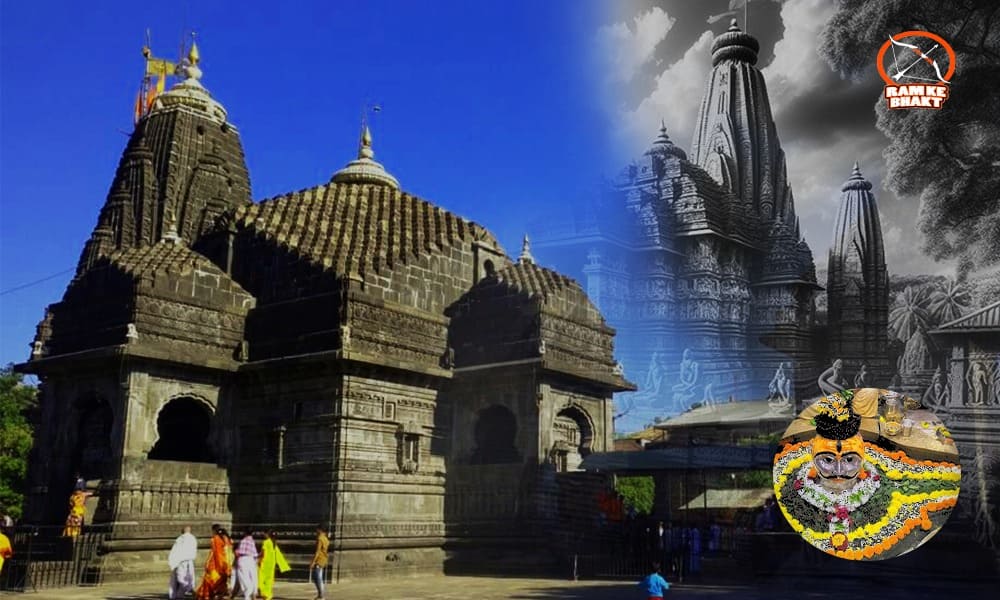
Mahadev. Shiva. The Exterminator of Evil. Hindus frequently come up with the phrase “Jyotirlinga” during their childhood. Hindus hold Shiva’s Jyotirlinga in the highest regard. Lord Shiva is worshiped in the shape of a Jyotirlingam at sanctuaries called Jyotirlingas. Jyoti and linga both relate to light and signs, independently. Jyotirlinga is Lord Shiva’s brightness.
1. The Gujarati shrine of Somnath
The Somnath Temple in Gujarat, which is regarded as the first of the 12 Jyotirlingas, may be found close to Veraval in the Kathiawar region of (Prabhas Kshetra). A famous pilgrimage destination in the nation is this jyotirlinga in Gujrat. Folklore describes how this Jyotirling in Gujarat came to be. The moon, according to the Shiva Purana, was married to 27 of Daksha Prajapati’s daughters, with Rohini being his favorite. Prajapati swore the moon would go completely dark because of his neglect of the other spouses.
2. Andhra Pradesh’s Mallikarjuna Jyotirlinga
One of India’s largest Shaivite sanctuaries is sometimes referred to as the “Kailash of the South” At this temple, Mallikarjuna (Shiva) and Bhramaramba (Devi) serve as the presiding deities. He departed towards Kraunch Mountain.
3. Madhya Pradesh has the Mahakaleshwar Jyotirlinga
In Central India, this Jyotirlinga in Madhya Pradesh is a significant place of deification. According to the Puranas, a five-year-old child named Shrikar was mesmerized by the king of Ujjain’s devotion to Lord Shiva. Shrikar began worshiping Shiva after taking a stone.
4. Madhya Pradesh’s Omkareshwar Jyotirlinga
One of the most hallowed Jyotirlinga, Omkareshwar Temple, is located in Madhya Pradesh on an islet in the Narmada River called Shivapuri. The name Omkareshwar, which translates to “Lord of Omkara” or “the Lord of the Om Sound,” is a given name. The Devas and Danavas (Gods and Demons) fought a tremendous battle, in which the Danavas ultimately triumphed, according to Hindu texts.
5. Jharkhand’s Baidyanath Jyotirlinga
It is situated in the Santal Parganas area of Jharkhand in Deogarh. People believe that one can attain moksha, or release, by worshiping this Jyotirlinga.
6. Maharashtra’s Bhimashankar Jyotirlinga
It is said to be the river’s source and is situated on the Bhima River’s banks. Bhima promised to get vengeance on Lord Vishnu when he discovered that he was the son of Kumbhakarana, who was destroyed by Lord Vishnu in his manifestation as Lord Ram. He made atonement to assuage Lord Brahma, who bestowed upon him great strength.
7. Tamil Nadu’s Rameshwar Jyotirlinga
The islet of Rameshwaram, off the Sethu seacoast of Tamil Nadu, is home to Rameshwar Temple, the southernmost of the 12 Jyotirlingas. This temple is well-known for its armature, particularly the 36 theerthams, halls, and lengthy, intricate hallways.
8. Nageshwar in Gujarat
On the Saurashtra seacoast of Gujarat, between Gomati Dwarka and Bait Dwarka Island, sits the Nagnath Temple, also known as the Nageshwar Temple. This Jyotirlinga is extremely important since it stands for impunity to all poisons. It’s stated that those who worship at this temple come bane-free. In accordance with the Shiva Purana, Supriya, a follower of Shiva, was kidnapped by the demon Daaruka.
9. The Kashi Vishwanath of Varanasi
The Kashi Vishwanath Temple is located in Kashi, which is the most hallowed position on earth. It’s positioned amid the crowded lanes of the holy megacity of Banaras( Varanasi). More so than Varanasi’s Ghats and Ganga, the Shivalinga continues to draw the pious attention of excursionists. In Banaras, it’s stated that the first Jyotirlinga demonstrated its supremacy over other divinities, entered the earth’s crust, and burned overhead.
10. Nasik’s Trimbakeshwar Jyotirlinga
About 30 kilometers from Nasik, Maharashtra’s Trimbakeshwar Temple is located on the Brahmagiri mountain, which is where the Godavari River runs. This temple is allowed to be the source of the Godavari, also known as the” Gautami Ganga” and believed to be the most hallowed swash in South India. The Shiva Purana claims that Shiva chose to settle then and took the name Trimbakeshwar at the hot request of the River Godavari, Gautam Rishi, and all the other Gods.
11. Kedarnath in Utrakhand
The Kedarnath Temple, one of the holiest passage destinations in India, is positioned on a mountain called Kedar at a height of 12000 bases in the Rudra Himalaya Range. About 150 kilometers separate it from Haridwar. Only six months out of the time are open at the Jyotirlinga temple.It’s customary for pilgrims traveling to Kedarnath to first stop at Yamunotri and Gangotri before bringing holy water to Kedarnath for idolization.
12. Aurangabad’s Grishneshwar Jyotirlinga
A village in Maharashtra called Verul, 20 kilometers from Daulatabad and not far from Aurangabad, may become the site of the Grishneshwar Jyotirlinga. In close proximity to this temple are the well-known tourist attractions known as the Ajanta and Ellora grottoes. This temple was built by Ahilyabai Holkar, who was additionally employed on Varanasi’s Kashi Vishwanath Temple’s repairs. The Grushmeswara, Grushmeswara, Ghushmeswara, and Grishneswara identities that refer to the Ghrishneshwar temple represent a few of the other names for it.


